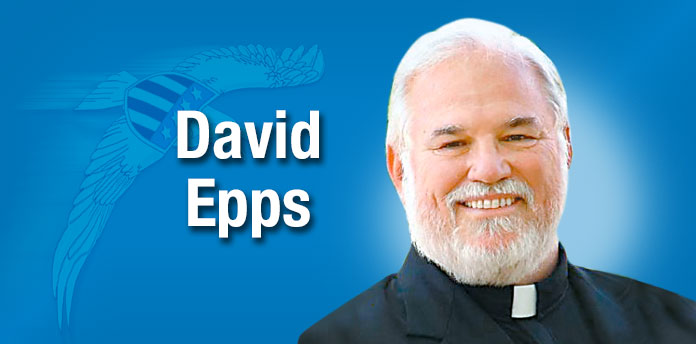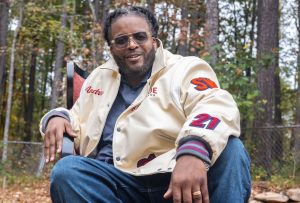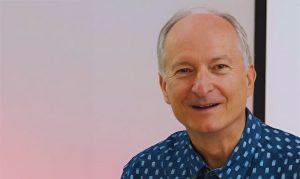It had been twenty-five years since I had graduated from Marine Corps Recruit Training at Parris Island, South Carolina. My wife, now a college professor of nursing, was in Hilton Head, SC to present a research paper. I tagged along for the ride, the food, and the beach. She, on the other hand, was in meetings all day.
As I looked at a map and a schedule of things to do, I realized that Parris Island was less than an hour from our hotel room. I had never been back to Parris Island since I had graduated and decided I would take a trip over on Friday.
There was much to see. Our experience as recruits, or “boots” as we were sometimes called, limited our perspective a great deal. We only saw what was designed for us to see.
Besides, in the thirteen weeks of boot camp, we trained every day from 5:00 a.m. to 9:00 p.m. when it was lights out. We did get to sleep in on Sundays — all the way to 6:00 a.m. There was virtually no freedom of movement, and we were told what to do, when to do it, and how to do it nearly every minute of the day.
After checking in and receiving permission to be on the base, I visited my old wooden barracks area that housed the 2nd Recruit Training Battalion, the confidence course, the water survival area, the close combat training area, the rifle range, the physical training area, and all those places that were frozen in my mind. There were recruits all over, much younger, of course, than me. Even then it was hard to believe that I was ever that young.
I visited the museum on Parris Island and learned that my “era was in a museum now,” as a young sergeant proudly informed me. Looking at the displays of the Vietnam Era, it felt as though I was looking into the past and, in a sense, I guess I was. The uniforms, the weapons … it had all changed, been upgraded, and improved.
However, my most memorable moment of that visit lasted only a very brief time. As I was walking down a sidewalk, heading to another area, I saw ahead of me a group of elderly men headed my way. What hair they had was all white, some were bent, some shuffled as they walked, one was in a wheelchair, and a few sported canes or walkers. I thought to myself that they must be from a local nursing home and were out for a field trip. They all had on bright yellow baseball caps. The easier to keep track of them, I thought.
As they drew near, I saw that there was red stitching on the ball caps. As they came within reading range, the caps all said, “GUADALCANAL REUNION.” I froze in place.
The Battle of Guadalcanal was the first major land offensive of the Allies against the Japanese Empire of World War II. The brutal fighting on the island lasted six months and two days. When it was finally over, the Japanese had lost a total of 24,000 men killed in the Battle of Guadalcanal, while the Americans sustained 1,600 killed, 4,200 wounded, and several thousand dead from malaria and other tropical diseases.
We were taught about these men in boot camp. These old men were among those who created the legend of the Marine Corps. They were among the Corps’ fiercest warriors. Documentaries and Hollywood movies had been made about the Marines of Guadalcanal. Now, they were old and I stood in awe before them.
I wanted to say something to them, to tell them that they were still revered and talked about in hushed tones. But words failed me. I stood in silence and got off the sidewalk, giving it up to these who had seen and done more for their country than I ever would. As they passed, just for a moment, I stood in their shadows.
It’s possible all of the men I saw that day are dead now. Of the 16,000,000 Americans who served in World Way II, only 240,329 were alive in 2021, and some of those have passed already. Those who remain are likely in their 90s or older. My father joined the Navy at age 17 in 1944. He would have been 95 next June.
Most of those that served during the Korean War are in their 80s and 90s now. The vast majority of the Vietnam veterans are in their 70s and 80s. Nearly all of those who are alive are grandfathers and great-grandfathers now. Some, especially from the Korean era, like my father-in-law, John F. Douglas, Jr., are great-great grandfathers.
All of these are old men, those who are still alive. But they were warriors once. And, truth be told, in their hearts, they are warriors still. If called upon and able to do so, nearly every one of them would pick up a rifle if their nation called upon them to defend her. Even the ones in wheelchairs.
I wish I had said something to those I encountered that day. Most of that generation would have replied that “they were just doing their job,” or that “the real heroes are the men who didn’t come back home.” They are usually modest, these old men. They say they are nothing special. They say that they were just doing what anybody would do. But they would be wrong. Not everybody did what they did. Not everyone responded to the call. Not everyone became a legend.
As these old men in scarlet and gold baseball caps shuffled past me that day, I stood in the grass in silent respect. There’s one other thing I wish I had done, since I had no words. I wish that, as they passed, I had saluted them. And, though it has been long delayed, I do so now.
[David Epps is the Rector of the Cathedral of Christ the King (www.ctk.life). During the pandemic, the church is open at 10:00 a.m. on Sundays but is also live streaming at www.ctk.life. He is the bishop of the Diocese of the Mid-South (www.midsouthdiocese.life) He may contacted at [email protected].]













Leave a Comment
You must be logged in to post a comment.